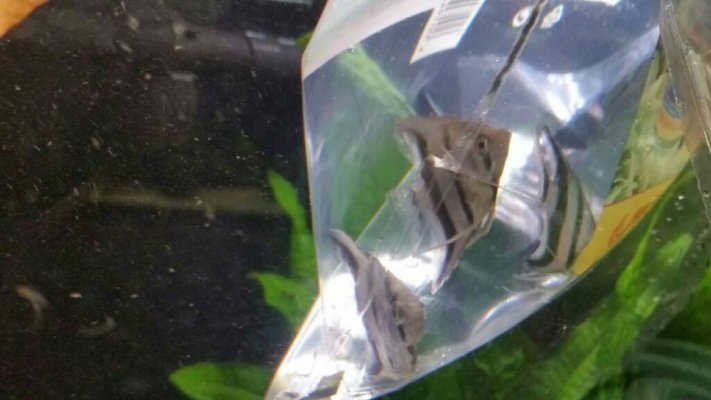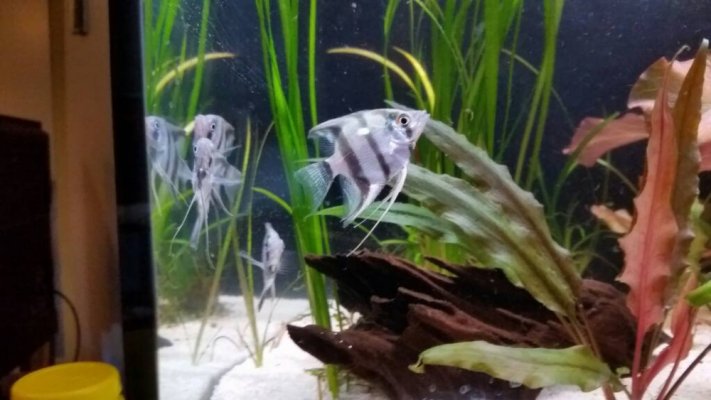Andy Sager
Aquarium Advice Addict
What level nitrate do you consider high for the eggs?
That's a great question and today, you win the prize because I really don't know.
 ( just most of them.
( just most of them.  )
) In my case, with Angels and other fish I artificially hatch, there is no nitrates in the water until after the eggs hatch because I start with clean fresh water and use just an airstone. Since no ammonia is being produced in this process, there is no nitrate. In my current situation, having the sponge filters in the tank prior to the eggs hatching helps with the ammonia but it produces nitrates and in those spawns where I did that, I lost them before the eggs hatched and I'm not sure what the level was in those tanks because I never tested for that. ( MY bad and I should know better.
With the plecos, it's much easier to tell as the eggs are a little larger and so are the embryos. I candle a Pleco egg and I can see the yolk sac clearly as well as the red veins pumping blood. Wasn't able to see that even with the last successful albino cory spawn.

Hope that answers your question.

 ) is that I have eggs that clearly have a white area inside the eggs and I have some eggs that are totally clear so I don't know which is right.
) is that I have eggs that clearly have a white area inside the eggs and I have some eggs that are totally clear so I don't know which is right.  In previous spawns, the eggs were dead and fungused by 24-36 hours in. With these ones with white, the white area is clearly inside the egg near the center and appears to not be decaying inside the shell. Maybe, since the air quality is okay still (?), the dead eggs just haven't rotted yet? I don't believe these cories throw regular fry, just albinos, so there shouldn't be 2 types of embryos. I'm not using any antifungals this time so hopefully it all works out. Needless to say, I'll be making notes for sure on this one if they hatch.
In previous spawns, the eggs were dead and fungused by 24-36 hours in. With these ones with white, the white area is clearly inside the egg near the center and appears to not be decaying inside the shell. Maybe, since the air quality is okay still (?), the dead eggs just haven't rotted yet? I don't believe these cories throw regular fry, just albinos, so there shouldn't be 2 types of embryos. I'm not using any antifungals this time so hopefully it all works out. Needless to say, I'll be making notes for sure on this one if they hatch. 



 The new Guppy tanks should be here on Monday. I decided to make this a recirculating system to prevent me from having even more tanks to clean. I'll install a drain valve into the return line so that all I will need to do is turn it on and drain into my big drain bucket and turn on the hose to fill from the sump.
The new Guppy tanks should be here on Monday. I decided to make this a recirculating system to prevent me from having even more tanks to clean. I'll install a drain valve into the return line so that all I will need to do is turn it on and drain into my big drain bucket and turn on the hose to fill from the sump.